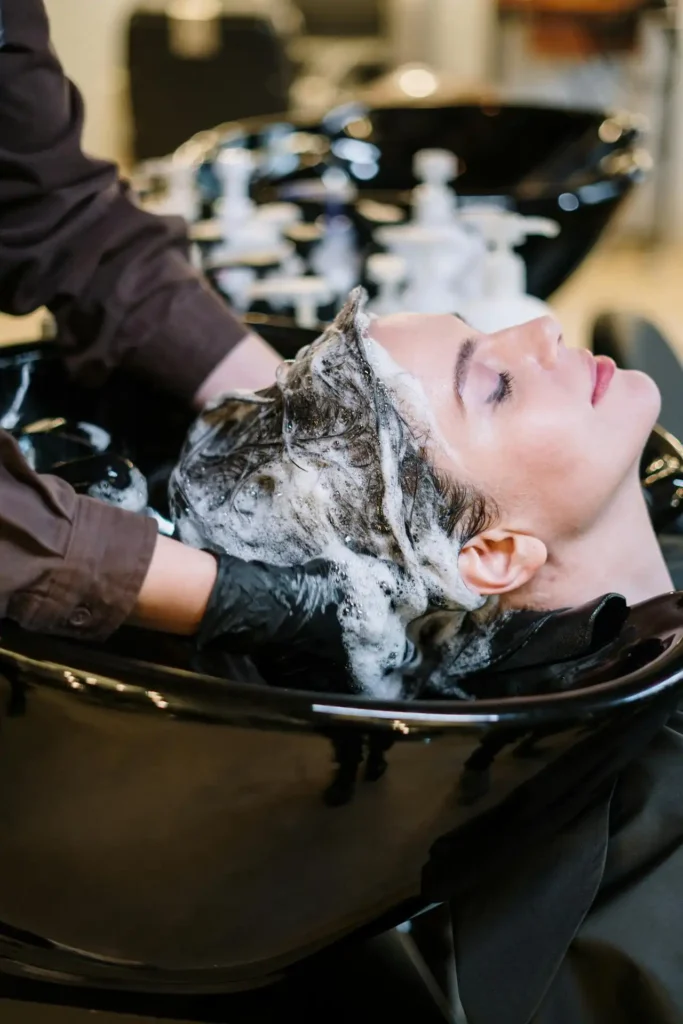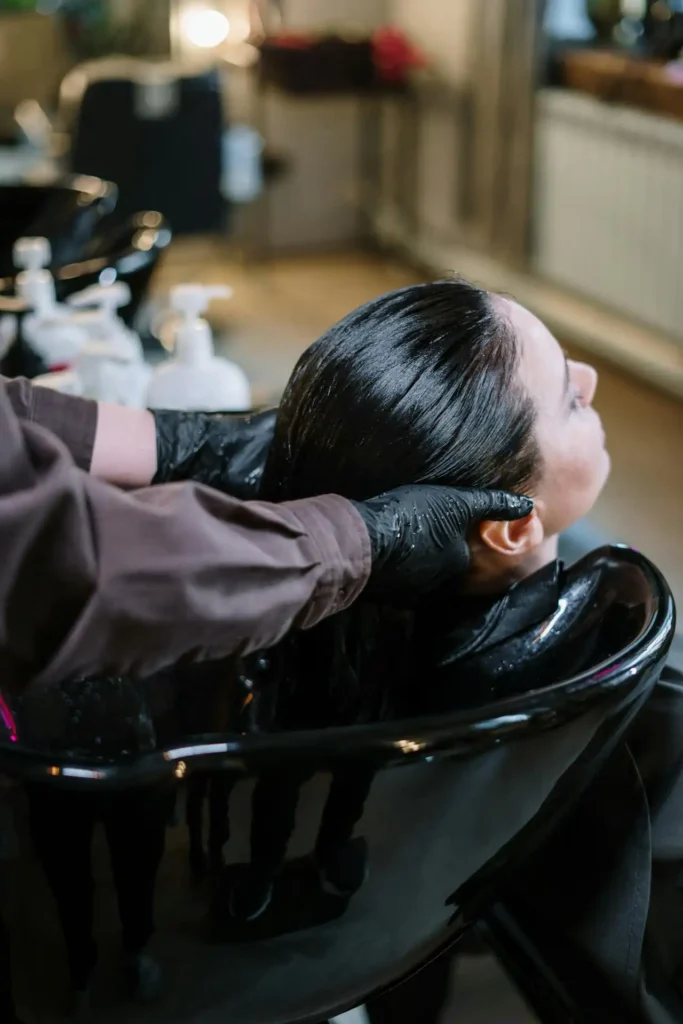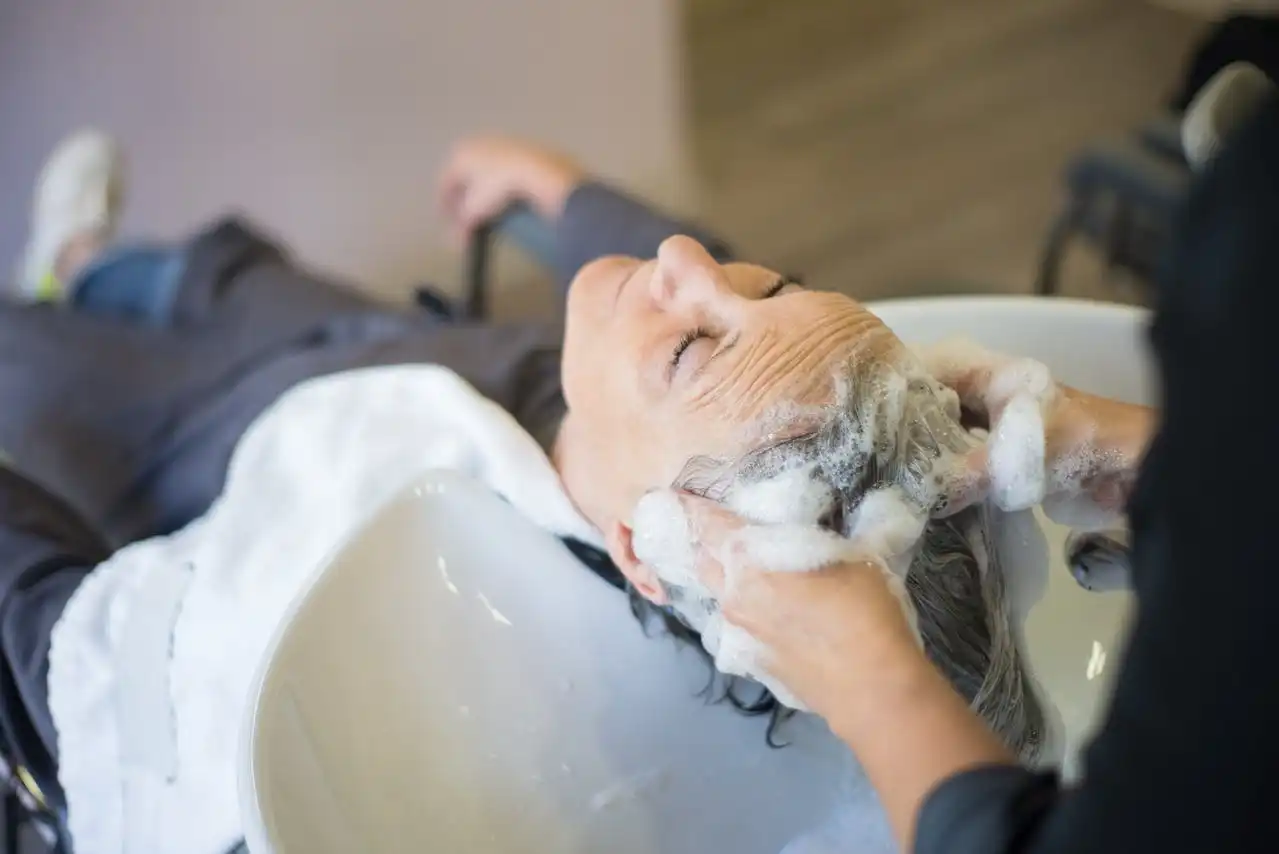How to Choose the Right Shampoo for Your Hair Type
Walking down the shampoo aisle can feel overwhelming with hundreds of bottles promising miracle results.
You’ve probably grabbed whatever’s on sale, only to wonder why your hair still feels off. The secret lies in understanding your unique hair type and matching it with the right formula.
Understanding Your Hair Type: The Foundation of Great Hair Care

Before you can choose the perfect shampoo, you need to identify your hair type.
Your hair has three main characteristics that determine what products will work best: texture, porosity, and oil production.
Hair texture refers to the thickness of individual strands. You can determine yours by rolling a single strand between your fingers.
Fine hair feels almost invisible and breaks easily. Medium hair has some substance but isn’t coarse. Thick hair feels sturdy and substantial between your fingers.
Porosity measures how well your hair absorbs and retains moisture. You can test this by dropping a clean strand into a glass of water.
Low porosity hair floats on top, taking forever to sink. High porosity hair sinks immediately, while normal porosity hair sinks slowly.
Your scalp’s oil production also plays a crucial role. Oily scalps produce excess sebum, making roots greasy within a day or two.
Dry scalps feel tight and may show flakes. Normal scalps maintain balanced moisture without becoming overly oily or dry.
Decoding Shampoo Ingredients: What to Look For and Avoid
Reading shampoo labels becomes easier when you understand key ingredients and their effects on different hair types.
Sulfates like sodium lauryl sulfate create that rich lather you’re used to, but they strip natural oils aggressively.
If you have dry, damaged, or color-treated hair, sulfate-free formulas protect your strands better.
Silicones provide immediate smoothness and shine, making hair feel softer instantly.
However, they can build up over time, weighing down fine hair or preventing moisture from penetrating high-porosity strands.
Look for water-soluble silicones like cyclomethycaine if you want temporary benefits without heavy buildup.
Natural oils and butters nourish dry hair beautifully. Argand oil, coconut oil, and shear butter provide deep moisture for coarse, damaged, or chemically-treated hair.
But if you have fine or oily hair, these ingredients might make your locks look greasy and flat.
Proteins strengthen weakened hair but can make already-strong hair brittle with overuse. Hydrolyzed keratin, wheat protein, and silk amino acids help damaged hair regain structure.
However, if your hair feels stiff or breaks easily after using protein treatments, you need more moisture than strength.
Choosing Shampoo for Specific Hair Types
Fine Hair: Volume Without Weight
Fine hair requires gentle cleansing that removes buildup without stripping essential oils.
You want formulas that add body and movement while avoiding heavy ingredients that cause limpness.
Volumizing shampoos work best for your hair type. These formulas contain lighter conditioning agents and sometimes include polymers that coat strands to create thickness.
Look for ingredients like hydrolyzed rice protein or panthenol, which strengthen without weighing hair down.
Avoid cream-based or moisturizing shampoos designed for dry hair. These contain heavy emollients that flatten fine strands against your scalp.
Similarly, skip products with heavy oils or butters listed in the first five ingredients. Dry shampoo becomes your best friend between washes.
Washing fine hair daily won’t damage it, but extending time between washes helps preserve your style and prevents over-cleansing.
Thick, Coarse Hair: Moisture and Manageability
Thick hair can handle stronger cleansing agents and benefits from rich, moisturizing formulas.
Your hair needs extra hydration to stay soft and manageable, especially if it’s naturally curly or wavy.
Moisturizing and smoothing shampoos work wonderfully for thick hair. Weekly deep-cleansing treatments remove product buildup that weighs down thick hair.
These formulas contain nourishing oils, butters, and humectants that soften coarse strands. Ingredients like glycerin, coconut oil, and ceramides help maintain moisture balance.
You can use sulfate-containing shampoos without worry if your hair isn’t chemically treated.
The natural thickness and strength of coarse hair resist damage from stronger cleansing agents.
However, if you have color-treated thick hair, sulfate-free options preserve your investment better.
Clarifying shampoos strip away silicones, styling products, and mineral deposits that accumulate over time.
Curly and Textured Hair: Hydration and Definition
Curly hair has unique needs due to its structure. The twists and turns in each strand make it harder for natural oils to travel from scalp to ends, creating dryness and frizz.
Co-washing, or washing with conditioner only, works exceptionally well for curly hair. This method cleanses gently while maintaining essential moisture.
When you do use shampoo, choose sulfate-free formulas that won’t strip natural oils. They cleanse without disrupting your curl pattern or causing frizz.
Look for shampoos specifically formulated for curly hair. These products contain curl-enhancing ingredients like shear butter, coconut oil, and aloe Vera.
Avoid products with drying alcohols like isopropyl alcohol or denatured alcohol. These ingredients disrupt curl formation and create rough, brittle texture.
Instead, seek fatty alcohols like cotyle alcohol or stearic alcohol, which actually moisturize hair.
Color-Treated Hair: Protection and Longevity
Color-treated hair requires special care to maintain vibrancy and prevent fading. Color-safe shampoos use gentler cleansing agents that won’t strip artificial pigments.
Chemical processing makes hair more porous and vulnerable to damage from heat, UV rays, and harsh cleansing.
These formulas often contain UV filters to protect against sun damage and antioxidants to prevent color oxidation.
Purple or blue-tinted shampoos neutralize unwanted tones in blonde, silver, or gray hair.
Use these weekly rather than daily to prevent over-toning. Alternate with your regular color-safe shampoo for best results.
Wait at least 48 hours after coloring before shampooing. This allows the cuticle to close and color molecules to settle properly. When you do wash, use cool water to minimize color bleeding.
Common Shampoo Mistakes That Damage Your Hair

Many people unknowingly sabotage their hair health through improper shampooing techniques.
You might use too much product, thinking more equals better results. Actually, a quarter-sized amount suffices for shoulder-length hair, while longer hair needs about a half-dollar sized portion.
Scrubbing your scalp aggressively seems logical for removing oil and buildup, but harsh rubbing causes irritation and potential hair loss.
Instead, massage gently with your fingertips, focusing on the scalp rather than the lengths of your hair.
Hot water feels luxurious but strips natural oils and opens the hair cuticle excessively.
Warm water cleanses effectively while cooler rinses seal the cuticle and add shine. Finish with the coolest water you can tolerate for maximum smoothness.
Concentrating shampoo on your lengths wastes product and can cause dryness.
Focus cleansing efforts on your scalp and roots, where oil and product buildup occur. The shampoo will cleanse your lengths sufficiently as you rinse.
Testing and Transitioning to New Shampoos
Your hair needs time to adjust to new products, so don’t expect immediate results.
Give any new shampoo at least two weeks of consistent use before deciding if it works for your hair type.
During the transition period, you might experience changes in texture, oiliness, or manageability.
This adjustment phase happens because your scalp and hair adapt to different cleansing agents and conditioning ingredients.
Keep notes about how your hair responds to different products. Track factors like oiliness, volume, shine, and manageability.
This information helps you identify patterns and preferences for future purchases. Don’t feel obligated to finish products that clearly don’t work for your hair.
Life’s too short for bad hair days, and continuing to use incompatible products can cause damage or scalp issues.
Professional vs. Drugstore: Making Smart Choices
Professional salon brands often contain higher concentrations of active ingredients and undergo more rigorous testing.
However, many drugstore options perform excellently and offer better value for money. Read labels carefully and research brands known for hair-friendly formulations.
Price doesn’t always indicate quality, but extremely cheap shampoos might contain harsh detergents or low-quality ingredients.
Consider your specific needs when choosing between professional and drugstore options.
If you have severely damaged, chemically-treated, or problematic hair, investing in professional products might provide better results.
For healthy, low-maintenance hair, drugstore options often work perfectly.
Sample sizes and travel bottles let you test professional products without committing to full-size purchases. Many salons offer sample packets or mini bottles for trying new lines.
Seasonal Adjustments and Hair Changes
Your hair’s needs change with seasons, age, hormones, and lifestyle factors. Summer humidity might require different products than winter dryness.
Pregnancy, menopause, and stress can alter your hair’s texture and oil production. Pay attention to how your hair responds to environmental changes.
You might need clarifying shampoos more frequently in humid weather or moisturizing formulas during dry winter months.
Age-related changes often mean switching to gentler, more nourishing formulas. Mature hair tends to become drier and more fragile, benefiting from sulfate-free, moisturizing products.
Don’t be afraid to rotate between different shampoos based on your hair’s current needs.
Having two or three reliable options allows you to adapt to changing conditions while maintaining healthy hair.
Building Your Perfect Hair Care Routine

Once you’ve identified your ideal shampoo, build a complementary routine with matching conditioners and treatments.
Products from the same line often work synergistically for better results. Listen to your hair and adjust washing frequency seasonally.
Frequency matters as much as product choice. Oily hair might need daily washing, while dry or curly hair thrives with less frequent cleansing.
Incorporate weekly treatments like deep conditioning masks or clarifying shampoos based on your hair’s specific needs.
These intensive treatments address problems that daily products can’t solve alone. Remember that great hair starts with a healthy scalp.
Gentle massage during shampooing stimulates circulation and promotes healthy hair growth while ensuring thorough cleansing.
Conclusion
Finding your perfect shampoo takes patience and experimentation, but understanding your hair type simplifies the process significantly.
Trust your hair’s response over marketing claims, and remember that consistency matters more than perfection in achieving healthy, beautiful hair.






